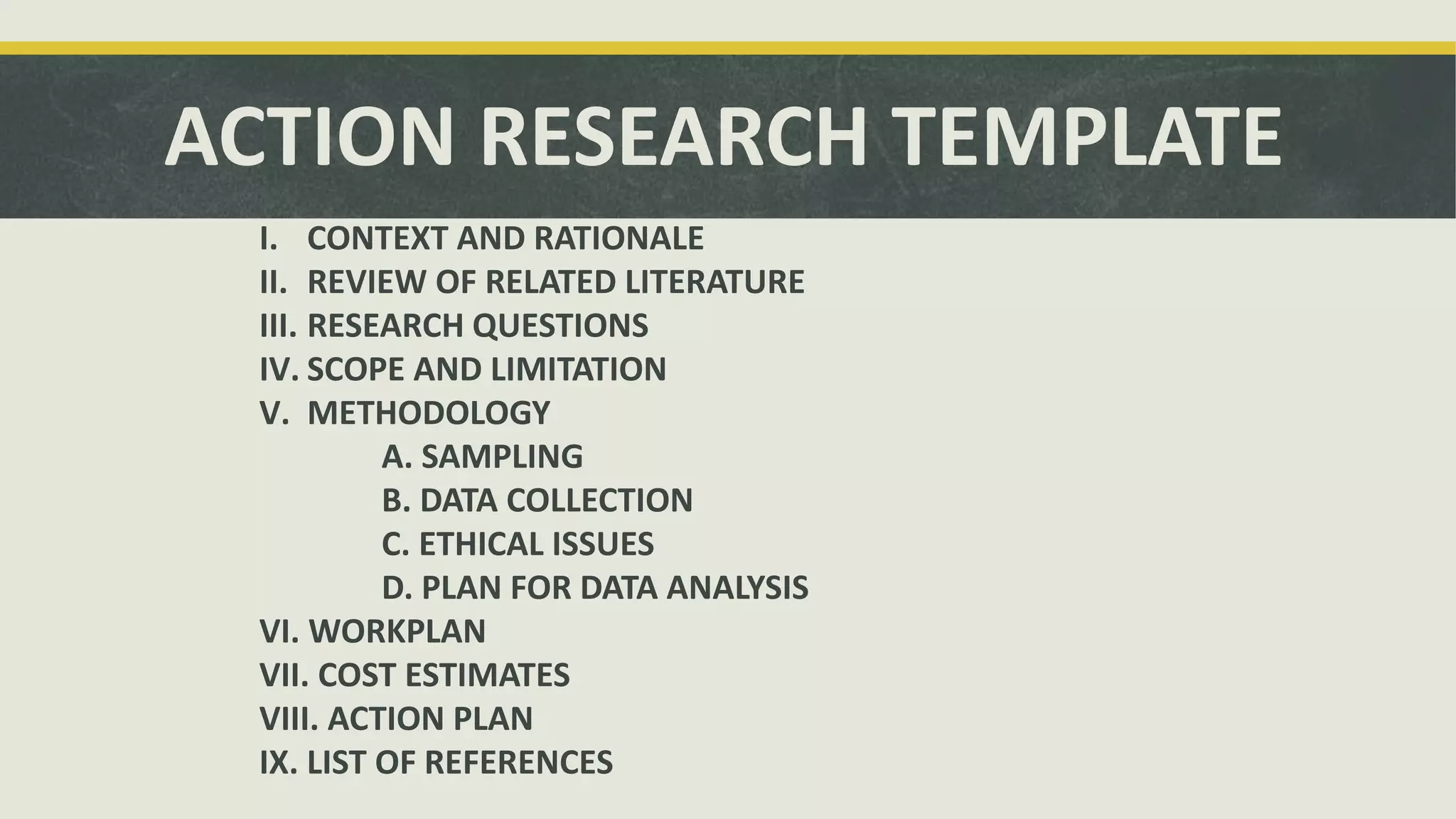This document provides templates and guidelines for writing research proposals and conducting action research. It discusses key components of a research proposal, including an introduction, literature review, research questions, methodology, work plan, cost estimates, and references. The methodology section provides details on sampling, data collection, ethical issues, and data analysis. Quantitative and qualitative research methods are also compared. The document provides information on research designs, variables, and common statistical tests used in data analysis.






















































![KUDER-RICHARDSON FORMULA 21
Used for dichotomously scored items that are all about the same difficulty
Formula: KR21 = [n/(n - 1)] x [1 - (M x (n - M) / (n x Var))]](https://image.slidesharecdn.com/actionresearchdesign-220910084758-14240381/75/Action_Research_Design-pptx-55-2048.jpg)


